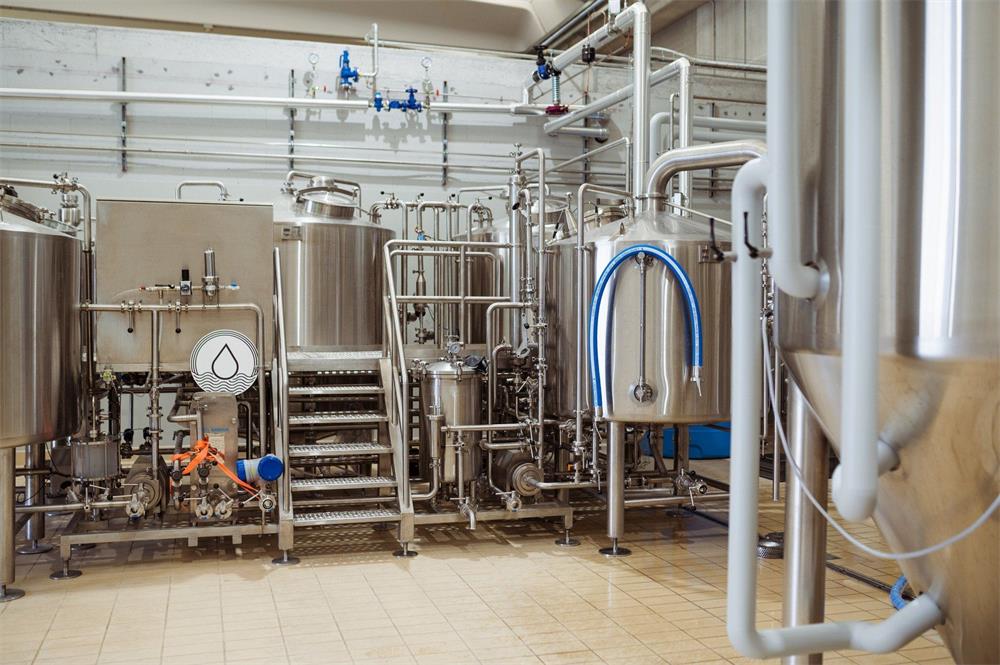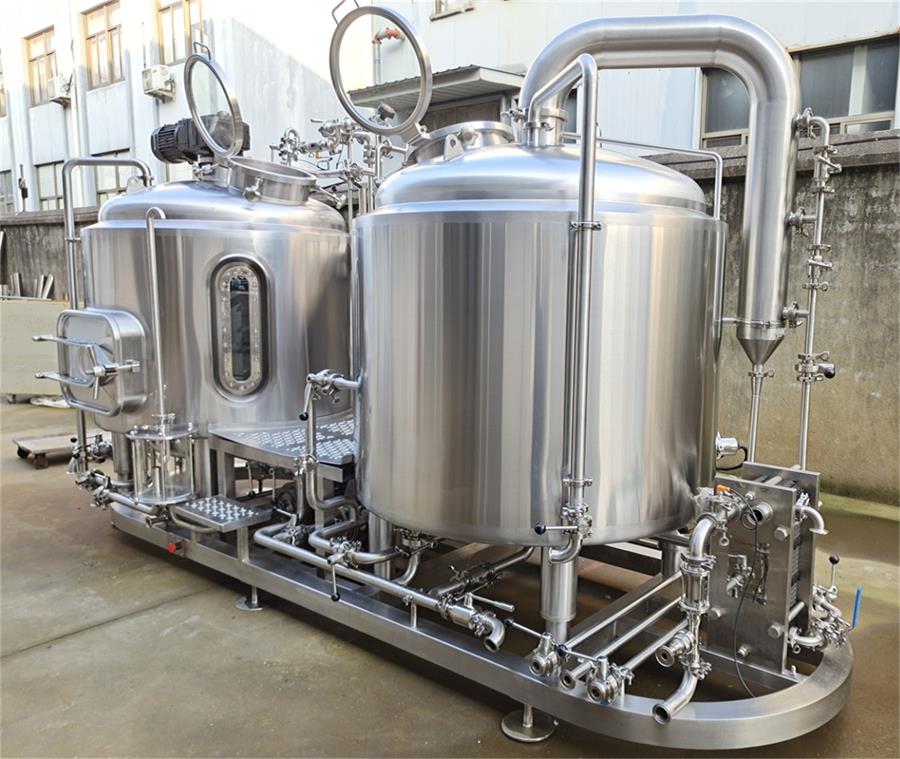Craft Beer Brewing Equipment
Craft beer brewing is an art that combines science, creativity, and precision. For homebrewers and commercial brewers alike, the right equipment is crucial to producing high-quality beer. This guide delves into every aspect of craft beer brewing equipment, providing an in-depth look at the essentials, the brewing process, equipment specifications, suppliers, and more. Let’s embark on this frothy journey!
Overview of Craft Beer Brewing Equipment
Craft beer brewing equipment encompasses a range of tools and machines designed to convert raw ingredients into delicious beer. From brewing kettles to fermenters, each piece plays a critical role in the process. The key is to understand each component’s function and how they work together to create that perfect pint.
Comprehensive Equipment Guide
Brewing beer requires various equipment, each tailored for specific stages of the brewing process. Here’s an overview:
- Mash Tun: Where grains are mixed with hot water to extract fermentable sugars.
- Brew Kettle: The vessel where the wort (unfermented beer) is boiled and hops are added.
- Fermenter: Where the wort is fermented with yeast to produce alcohol and carbonation.
- Bright Tank: Used for aging, maturing, and carbonating the beer before packaging.
- Heat Exchanger: Cools the wort quickly to a temperature suitable for fermentation.
- Grain Mill: Crushes grains to prepare them for mashing.
- Pumps and Hoses: Facilitate the movement of liquids between stages.
- Kegs and Bottles: For storing and serving the finished beer.

Types of Craft Beer Brewing Equipment
| Equipment Type | Description | Primary Use |
|---|---|---|
| Mash Tun | A vessel for mixing milled grains with hot water to convert starches into fermentable sugars. | Mashing grains |
| Brew Kettle | A large pot where the wort is boiled and hops are added for bitterness and flavor. | Boiling wort |
| Fermenter | A container where yeast is added to the wort, converting sugars into alcohol and carbon dioxide. | Fermentation |
| Bright Tank | A tank used to age, carbonate, and clarify the beer before packaging. | Conditioning beer |
| Heat Exchanger | A device that rapidly cools the wort to fermentation temperature, minimizing the risk of contamination. | Cooling wort |
| Grain Mill | Equipment that crushes grains to increase their surface area for better sugar extraction during mashing. | Crushing grains |
| Pumps and Hoses | Essential for transferring liquids between vessels and ensuring a smooth brewing process. | Moving liquids |
| Kegs and Bottles | Containers for storing and dispensing the finished beer. | Packaging beer |
The Brewing Process Explained
Brewing craft beer is a multi-step process that requires precision and patience. Here’s a detailed look at each stage:
- Mashing: The process begins in the mash tun, where crushed grains (malt) are mixed with hot water to create a mash. This mixture sits for about an hour, allowing enzymes to break down starches into fermentable sugars.
- Lautering: After mashing, the liquid wort is separated from the grain husks in a process called lautering. The wort is then rinsed with hot water to extract additional sugars.
- Boiling: The wort is transferred to the brew kettle and boiled. Hops are added at various stages to impart bitterness, flavor, and aroma to the beer. The boiling process also sterilizes the wort.
- Cooling: The hot wort is rapidly cooled using a heat exchanger to a temperature suitable for fermentation.
- Fermentation: The cooled wort is transferred to a fermenter, where yeast is added. The yeast ferments the sugars, producing alcohol and carbon dioxide. This stage can last from a few days to several weeks, depending on the beer style.
- Conditioning: Once fermentation is complete, the beer is transferred to a bright tank for conditioning. During this phase, the beer matures, flavors meld, and carbonation levels adjust.
- Packaging: Finally, the beer is filtered (if necessary), carbonated, and packaged in kegs, bottles, or cans for distribution and consumption.
Equipment Capacity, Space, Design, Layout, and Customization
| Feature | Details |
|---|---|
| Capacity | Equipment ranges from small homebrewing systems (5-10 gallons) to large commercial systems (30+ barrels). |
| Space Requirements | Homebrewing setups can fit in a garage or basement, while commercial breweries need dedicated space with proper ventilation, drainage, and utilities. |
| Design | Modern brewing equipment is designed for efficiency, ease of use, and durability. Stainless steel is the preferred material due to its corrosion resistance and ease of cleaning. |
| Layout | A well-planned brewery layout optimizes workflow, safety, and cleanliness. Equipment should be arranged logically to minimize movement and ensure easy access for cleaning and maintenance. |
| Customization Options | Brewers can customize equipment based on their specific needs, such as adding additional fermenters, specialized pumps, or automation systems for better control over the brewing process. |
Suppliers and Price Range
| Supplier | Equipment Offered | Price Range |
|---|---|---|
| Blichmann Engineering | Home and small-scale brewing systems, fermenters, and accessories | $500 – $10,000 |
| SS Brewtech | Fermenters, kettles, and complete brewing systems | $1,000 – $50,000 |
| BrewBuilt | Commercial brewing equipment including fermenters and bright tanks | $10,000 – $200,000 |
| Spike Brewing | Customizable brewing systems for home and commercial use | $2,000 – $100,000 |
| MoreBeer! Pro | Wide range of brewing equipment for all scales | $500 – $150,000 |
Installation, Operation, and Maintenance
| Aspect | Details |
|---|---|
| Installation | Proper installation is critical. It may require professional assistance to ensure all components are correctly set up and integrated with existing utilities. |
| Operation | User manuals and training are essential. Automated systems can simplify the brewing process but require an understanding of digital controls and monitoring systems. |
| Maintenance | Regular cleaning and maintenance are crucial to prevent contamination and ensure the longevity of the equipment. This includes sanitizing tanks, inspecting seals, and checking for wear and tear. |
Choosing the Right Supplier
| Criteria | Considerations |
|---|---|
| Reputation | Look for suppliers with positive reviews and a track record of quality and reliability. |
| Support Services | Ensure the supplier offers robust customer support, including installation assistance, training, and after-sales service. |
| Customization | Choose suppliers who can tailor equipment to your specific needs and preferences. |
| Price and Value | Compare prices, but also consider the value offered in terms of durability, features, and long-term support. |
| Warranty and Guarantee | Verify the warranty terms and ensure they cover essential aspects like manufacturing defects and performance issues. |
Comparing Advantages and Limitations of Different Equipment
| Equipment | Advantages | Limitations |
|---|---|---|
| Mash Tun | Efficient sugar extraction, easy to clean, customizable sizes. | Can be bulky, requires precise temperature control. |
| Brew Kettle | Durable, good heat distribution, multiple size options. | Can be expensive, requires significant energy to heat. |
| Fermenter | Variety of designs (conical, flat-bottom), easy to monitor fermentation. | Some designs can be hard to clean, requires temperature control. |
| Bright Tank | Enhances beer clarity and carbonation, useful for bulk aging. | Requires additional space, can be costly. |
| Heat Exchanger | Rapid cooling, reduces contamination risk. | Requires regular cleaning, initial cost can be high. |
| Grain Mill | Increases efficiency of mashing, adjustable settings for different grains. | Can be noisy, requires regular maintenance. |
| Pumps and Hoses | Facilitates efficient movement of liquids, reduces manual labor. | Requires regular cleaning and maintenance, hoses can wear out over time. |
| Kegs and Bottles | Convenient for storage and serving, preserves beer quality. | Bottling can be labor-intensive, kegs require CO2 tanks and regulators. |
Operating Craft Beer Brewing Equipment
Operating brewing equipment requires a combination of knowledge, skill, and attention to detail. Here are some key tips:
- Understand the Process: Familiarize yourself with each stage of brewing, from mashing to packaging.
- Maintain Cleanliness: Sanitation is crucial in brewing. Regularly clean and sanitize all equipment to prevent contamination.
- Monitor Parameters: Keep an eye on temperature, pressure, and other critical parameters throughout the brewing process.
- Record Data: Track your brewing sessions to identify areas for improvement and ensure consistency.
- Seek Training: Consider taking brewing courses or workshops to enhance your skills and knowledge.
Advantages of Craft Beer Brewing Equipment
Investing in quality brewing equipment offers
numerous benefits:
- Improved Consistency: Precision equipment ensures consistent results, batch after batch.
- Enhanced Control: Modern brewing systems offer better control over variables like temperature and pressure, leading to higher quality beer.
- Scalability: Scalable equipment allows brewers to increase production without compromising quality.
- Efficiency: Automated systems and efficient designs reduce labor and time requirements, improving overall efficiency.
Limitations of Craft Beer Brewing Equipment
Despite the advantages, there are some limitations to consider:
- High Initial Cost: Quality brewing equipment can be expensive, especially for commercial setups.
- Space Requirements: Large systems require significant space, which can be a constraint for some brewers.
- Maintenance Needs: Regular maintenance is essential to keep equipment in good working condition, adding to the overall cost and effort.
- Learning Curve: Operating advanced brewing systems requires knowledge and training, which can be a barrier for beginners.

FAQ
| Question | Answer |
|---|---|
| What is the most important piece of brewing equipment? | The fermenter is crucial as it’s where the actual fermentation happens, turning wort into beer. |
| How often should brewing equipment be cleaned? | Equipment should be cleaned after each use to prevent contamination and ensure the best beer quality. |
| Can I start brewing beer at home with a small budget? | Yes, homebrewing kits are available for as little as $100, making it accessible for beginners. |
| What materials are best for brewing equipment? | Stainless steel is preferred for its durability, ease of cleaning, and resistance to corrosion. |
| How long does the brewing process take? | The entire process can take anywhere from a few weeks to several months, depending on the beer style and fermentation requirements. |
| Are automated brewing systems worth the investment? | For serious brewers, automated systems offer improved consistency, efficiency, and control, making them a worthwhile investment. |
| Can I brew different types of beer with the same equipment? | Yes, most brewing equipment is versatile and can be used to produce a wide range of beer styles. |
Conclusion
Craft beer brewing is a rewarding endeavor that blends science, art, and passion. The right equipment is key to achieving the best results, whether you’re a homebrewer or running a commercial brewery. By understanding the various types of brewing equipment, their functions, and how to choose the best options for your needs, you can elevate your brewing game and create outstanding beers.
Share this entry
Interested in learning more about Brewing Systems including additional details and pricing information? Please use the form below to contact us!
YOLONG BREWERY EQUIPMENT FAQS
- Commercial Brewery / Craft Brewery / Microbrewery / Nanobrewery
- What is The Difference Between Craft Beer and Industrial Beer?
- The Bespoke Differences In Custom Brewing Systems
- Everything You Need to Know About Kettle Souring
- How to Choose Brewing Equipment for Your business?
- How To Choose The-Best Partner To Build Your Commercial Microbrewing System?
- Two Detection Sensors That You Need To Use In Your Brewhouse System
- Remote Control Applications in Brewing Equipment/How does it work?
- How To Clean Your Brand New Brewery Tanks?

